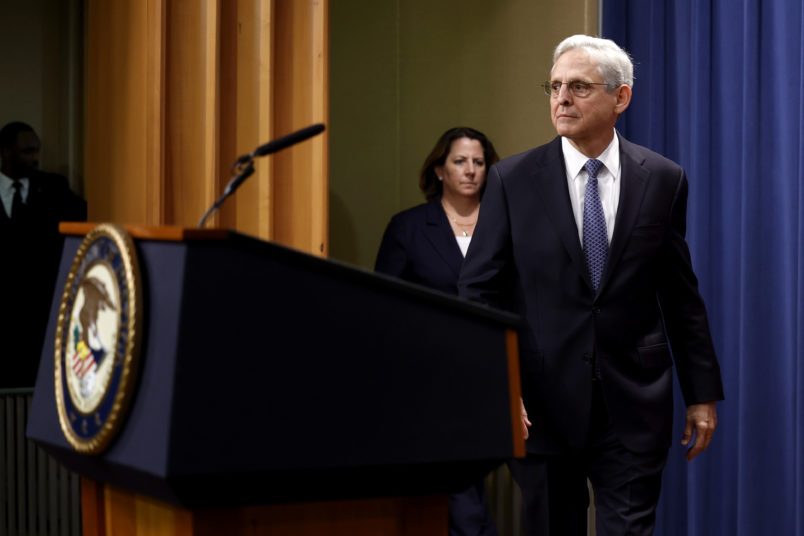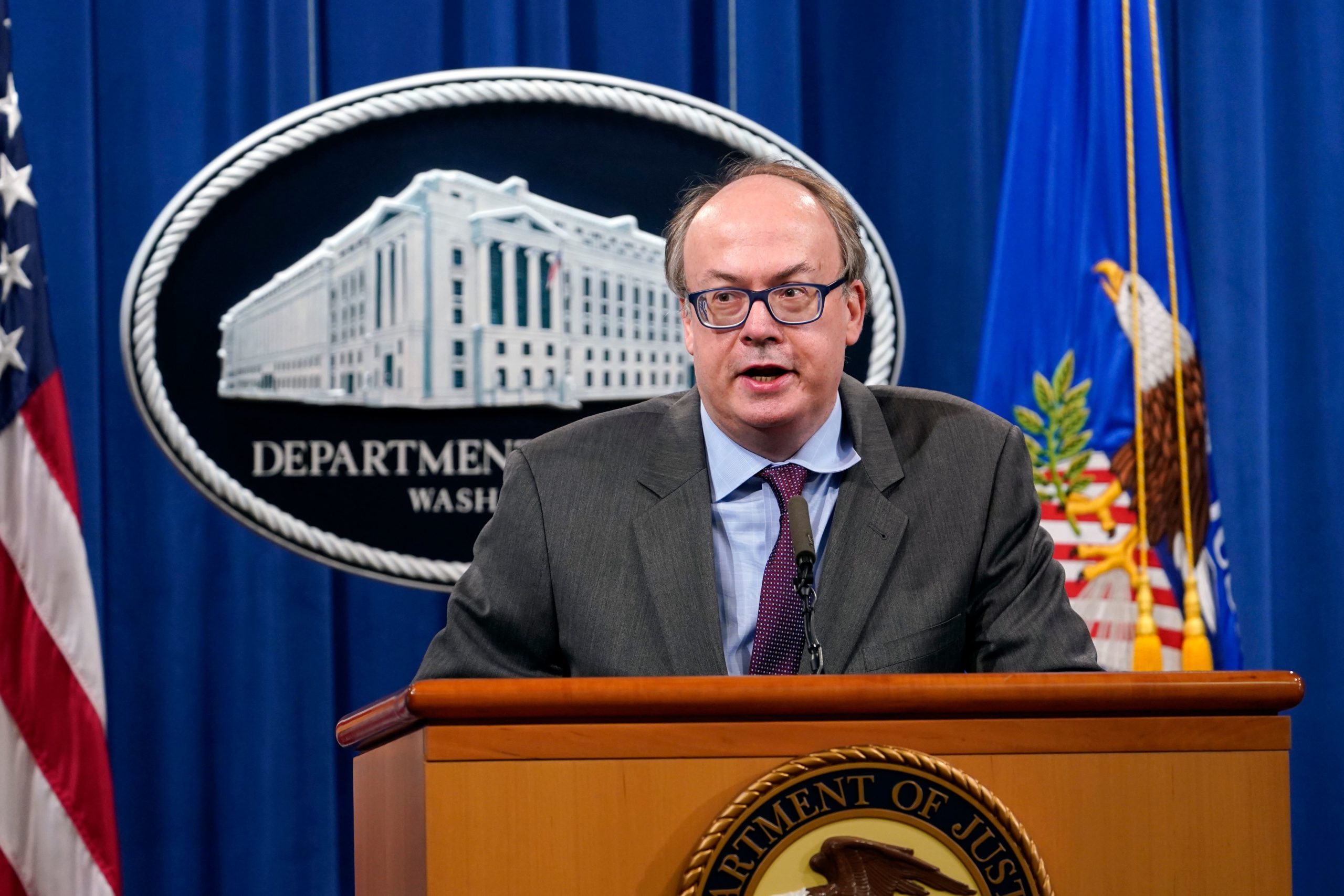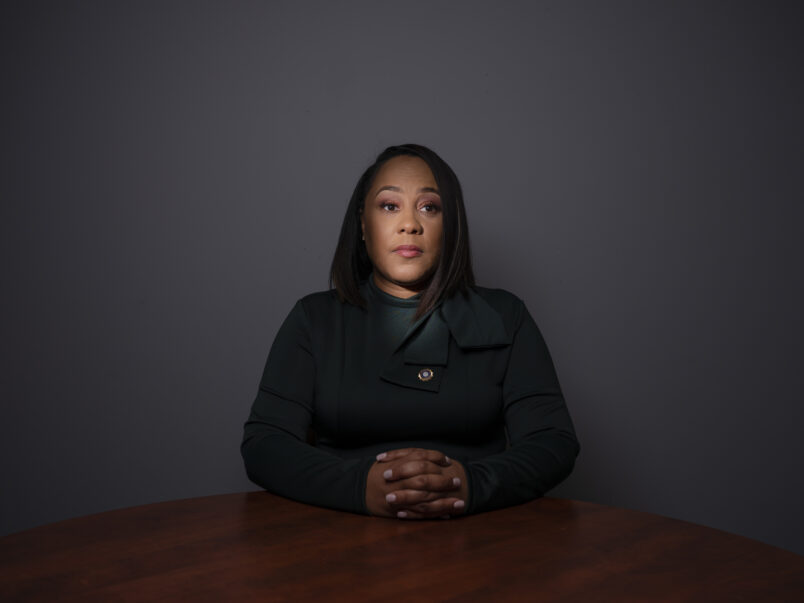Here’s a new way of thinking about the effort to overturn the 2020 election.
Instead of a series of disconnected, disparate schemes all aimed at the same goal, the fake electors plot provides a lens through which to view the entire effort, giving Trump’s 2020 plans a coherence, with each piece fitting neatly together. Now, two years after the violence of Jan. 6, this fresh look at the scheme reinforces how efforts to spread conspiracy theories, subvert the DOJ, weaponize state legislatures, summon an angry mob and, ultimately, pressure the vice president on Jan. 6 were all part of the same plot, with fake electors at the center.
Importantly, it’s a scheme that may carry criminal liability as federal prosecutors continue their investigation.
This new understanding of the fake electors plot is drawn from the Jan. 6 committee’s now-released materials, and from other reporting conducted by TPM, including a review of the texts Mark Meadows turned over to the committee. It also comes as Fulton County, Georgia District Attorney Fani Willis weighs whether to issue indictments after her year-long investigation of Trump. Willis has focused on the fake electors in her investigation, probing not only the electors themselves but the attorneys and officials on the Trump campaign who organized them.
TPM reported in summer 2022 on how the fake electors scheme could give the DOJ a way in to Trump’s election reversal effort, and on how they unite different portions of the broader universe of Trump’s bid to stay in power, against the will of the American people.
But a closer look at the record made available by texts, documents, and other records shows precisely how central the fake electors were to the various schemes that Trump and his allies had going — they were the mechanism that, in Trumpworld’s thinking, could at any point from early December until Jan. 6 have allowed pressure on state legislators, officials, Congress, Mike Pence, and the Supreme Court to turn into actions that would flip the result.

The Electors
In the weeks after the 2020 election, the Trump campaign arranged for the creation of fake elector slates in seven states.
Per memos released by the Jan. 6 committee, the electors had the stated purpose of “preserving” their vote — that is, retaining the option that, were the election to be declared invalid somehow, they could then be swapped in in the place of the former, now-unneeded Biden electors to provide a legal mechanism for Trump’s victory.
In a normal election, the electors of the winning candidate cast their ballots and send them onwards to Congress, where a joint session verifies that candidate’s victory. Trump sought to make the 2020 election abnormal, and to use his electors as part of his scheme to contest and to “win” various states, regardless of whether or not he received more votes in those states.
Though much of Trumpworld quickly cottoned on to the fake electors scheme, the origins of the plan remain murky. The Atlantic’s Barton Gellman reported in September 2020 that versions of the scheme were already being discussed; he cited “sources in the Republican Party at the state and national levels.”
But it’s stunning to observe how, within days of the November 2020 election, people up and down the hierarchy of the Trump campaign were ready to move on the fake electors plot.
On Nov. 5, 2020, Donald Trump Jr. was one of many people in Trump’s orbit to text White House Chief of Staff Mark Meadows with a plan for how electors could be used to subvert the election, up to Jan. 6.
“It’s very simple,” Don Jr. wrote, according to a text log that Meadows handed over to the Jan. 6 committee and that was obtained by TPM. “If through our lawsuits and recounts the Secretary of States on each state cannot �certify� that states vote the State Assemblies can step in and vote to put forward the electoral slate Republicans control Pennsylvania, Wisconsin, Michigan, North Carolina etc � we get Trump electors[.]” (The text message contents received by the committee contained tokens that replaced emojis and certain punctuation.)
“There is a Safe Harbor on 8 December if for whatever reason you miss that the Electors then cannot meet in the individual state Capitols on 14 December,” he continued. “So we either have a vote WE control and WE win OR it gets kicked to Congress 6 January 2021[.]”
According to the text log, Meadows acknowledged Don Jr.’s text, and other plans like it coming in from allies.
Per a Nov. 12 email from Newt Gingrich to Meadows and White House Counsel Pat Cipollone obtained and released by the Jan. 6 committee, the former speaker wanted to know who was “in charge of coordinating all the electors” and remarked that they’d all have to meet on Dec. 14 to be valid. Then, Gingrich added, the ballots would “force contests, which the house would then have to settle.”
Gingrich’s email contained a seeming reference to a theory that would be further developed for Trump and given legal heft by a little-known attorney named Ken Chesebro, which posited that the final date to decide the election was not Dec. 14 — that was merely the date by which electors of any given candidate had to pledge themselves. The real, final deadline, in Chesebro’s thinking, was Jan. 6 — that’s when Congress would meet to hold a joint session certifying the electoral votes.
It presented an opportunity, Chesebro articulated in a series of memos sent from mid-November through December published by the panel: State legislatures could re-certify pro-Trump electors even if state officials had said that Biden was the winner.
Aiding in this was John Eastman, a conservative movement attorney who had worked with Chesebro on a birthright citizenship case years before.
On Nov. 23, Sen. Mike Lee (R-UT) referenced Eastman’s role in developing the plot in a text to Meadows, saying that the professor was “proposing an approach that unlike what Sidney Powell has propose could be examined very quickly.”
“But to do this, you’d have to act very soon,” he added.

The Schemes
The electors were in place.
This is where how to think about them becomes key. What would it take for them to be used?
In Trumpworld’s calculation, they were like a rusty lever that, with enough pressure, Trump thought he could swing into an “on” position.
In this case, it involved what has seemed like multiple, separate schemes: pressure on state legislators, attacks on Mike Pence, the attempt to have the DOJ hijacked by Jeff Clark, a call to Georgia Secretary of State Brad Raffensperger, and long-shot Supreme Court cases.
But what these schemes all have in common is that they rely on the fake electors to move forward.
Take pressure on the state legislatures.
Per the plan, the Trump campaign would need not only to swear in fake electors regardless of whether it won the underlying state, but also persuade the state legislatures to intervene in the election and certify the votes for Trump — regardless of which candidate won the state.
Right-wing attorney Cleta Mitchell explained the idea in her testimony to the committee as follows.
“The legislature has the authority to choose the electors,” she said. “And they don’t have to ask anybody’s position, in my view.”
But the legislatures would need some convincing that the election was fraudulent, or at least unable to be decided. That’s where the increasingly harebrained conspiracy theories came in — desperate bids to sway state legislators who could, some believed, de-certify Biden’s electors. Court cases repeating these claims — the overwhelming majority of which were unsuccessful — were seen as largely aimed at the same audience.
As the weeks progressed, Trump eyed the DOJ to apply additional pressure on the states. If officials could declare that the election was fraudulent, or send a letter to the state legislatures asking for a session to appoint the fake electors as the real ones, that could swing things his way.
Ken Klukowski, an attorney who worked for the Trump campaign during the election, joined the DOJ in mid-December for a brief, six-week stint. There, he worked as an aide to Jeffrey Bossert Clark, the acting assistant attorney general for the civil division.
Together, Clark and Klukowski drafted a letter declaring that the DOJ had “identified significant concerns that may have impacted the outcome of the election in multiple States.” It went on, wielding the authority of federal law enforcement, to advise states to do what the schemers behind the fake electors plot wanted, stating that, “The Department believes that in Georgia and several other States, both a slate of electors supporting Joseph R. Biden, Jr., and a separate slate of electors supporting Donald J. Trump, gathered on that day at the proper location to cast their ballots, and that both sets of those ballots have been transmitted to Washington, D.C., to be opened by Vice President Pence.”
The letter failed amid opposition from senior DOJ officials, and was never sent out. Its exact origins remain unclear, but the committee found evidence that Klukowski and Clark were in close contact with Eastman throughout this period.
Clark and Eastman spoke at least five times between Jan. 1 and Jan. 8, while Klukowski, who drafted the letter, spoke with Eastman at least four times between Dec. 22 and Jan. 2, according to committee materials.
A similar dynamic played out as Trump applied pressure to state officials.
The infamous call that Trump placed to Raffensperger was in part focused on having Raffensperger re-certify the result. Instead of the Biden electors, Raffensperger would re-certify the Trump electors, sending them to Congress on Jan. 6.
“Under the law you’re not allowed to give faulty election results, OK? You’re not allowed to do that. And that’s what you done,” Trump told Raffensperger on the infamous Jan. 2 phone call. “This is a faulty election result. And honestly, this should go very fast. You should meet tomorrow because you have a big election coming up and because of what you’ve done to the president.”

Pence
The pressure campaign on Pence in the days leading up the Jan. 6 also involved the fake electors as a hinge point to make the plan work.
Per plans developed by Eastman and obtained by the Jan. 6 committee, the idea was as follows: Pence, presiding over the joint session on Jan. 6, needed to cast away votes that were from Biden, allowing the House to reconsider while giving the states enough time to “certify” the Trump votes. Pence could then choose the “real,” pro-Trump electors.
It appears there was broad understanding of this plot within Trumpworld, among friendly state officials, and even among Trump-supporting party activists.
“Message should be: �Vice-President has the power to reject electors born of illegal votes� Then it�s about all illegal votes, intended fraud or unintended illegal voting … This doesn�t force the VP to say FRAUD … He doesn�t need to , ILLEGAL VOTES !,” wrote Marty Davis, a Minnesota quartz countertop magnate and GOP donor, in a message to Mark Meadows on Jan. 5, according to Meadows’ log.
Eastman himself touted the plan in a Jan. 5 email to Greg Jacob, a Pence attorney.
“This is huge, as it now looks like PA Legislature will vote to recertify its electors if Vice President Pence implements the plan we discussed,” Eastman wrote.
Trump used the demonstrators that he summoned to D.C. as a tool for wrenching the alternate electors scheme into gear, and, specifically, pressuring Pence to do his part, the Jan. 6 committee emphasized during its hearings. When Pence announced that he would refuse to play along, Trump sicced the mob on the Capitol, the panel found, with members of the mob understanding that their role was to go after Pence.
As part of the pre-riot phase of the pressure campaign, organizers prepared a rally on the steps of the Supreme Court, TPM first reported and the Jan. 6 committee later confirmed. Directly across from the Capitol building, the rally would provide a staging ground for demonstrators to apply pressure directly to the legislators, and vice president, inside.
Organizers pulled the plug on that rally as the Capitol was stormed.
The Pence lawyer, Jacob, messaged Eastman as the mob stormed the Capitol.
“Congress has debated submissions, including competing submissions. It has never once referred them out to state legislatures to decide,” he wrote, before adding, “And thanks to your bullshit, we are now under siege.”

The Law
The committee, in its final report, cited Trump in the speech that he gave on the Ellipse on the morning of Jan. 6, in which he said that “we have come to demand that Congress do he right thing and only count the electors who have been lawfully slated, lawfully slated.”
“This was no off-the-cuff remark,” the report reads. “It was the culmination of a carefully planned scheme many weeks in the making.”
Over the past months and years, state and federal law enforcement have examined the fake electors and their role in Jan. 6.
Special counsel Jack Smith has picked up on an investigation that issued grand jury subpoenas to the electors themselves, and which has examined the role of the Trump campaign and GOP officials in bringing them together after the election in 2020.
But it’s Fani Willis, the Fulton County DA, who appears to have gone the furthest in probing the matter. She’s called Raffensperger, Chesebro, the Georgia electors, and others as part of her investigation.
The results remain unclear; a report compiled by a grand jury empaneled in the case has not yet been released. Willis only said that her decision on whether — and who — to charge was “imminent.”







Good article, as always. But unless and until indictments against Trump and those around him engaging in the fake elector scheme are brought, it means less than nothing. As others have said awhile ago now, without indictments and accountability, this failed coup attempt in 2020/2021 was merely a dress rehearsal.
Not a lawyer, but this article reminds us why it has taken so much time to indict–a large cast of characters, wheels turning in so many places. And I assume a prosecutor has to know all the weak spots, as well as be able to explain coherently how it all worked. Ultimately a jury has to be convinced.
“The thing to try when all else fails is: Again.”
Brilliant analysis.
(And who knew Don Jr. is a constitutional scholar! /s)
I’m hoping that the senators and representatives who also participated in this scam will be indicted as well. Grassley and Johnson are the first to come to mind.
The post Civil War amendments ought to be brought to bear on what can only be called treason.